Regrow from Scraps
Turn kitchen off-cuts into fresh herbs, leaves and shoots on a sill, step, or balcony — fast, cheap, and satisfying.
Quick Wins (fastest results)
Spring onions
Save the white ends with roots. Sit in 2–3 cm water; change every 2–3 days. Greens re-grow in 5–10 days. Pot up after 2 weeks for stronger growth.
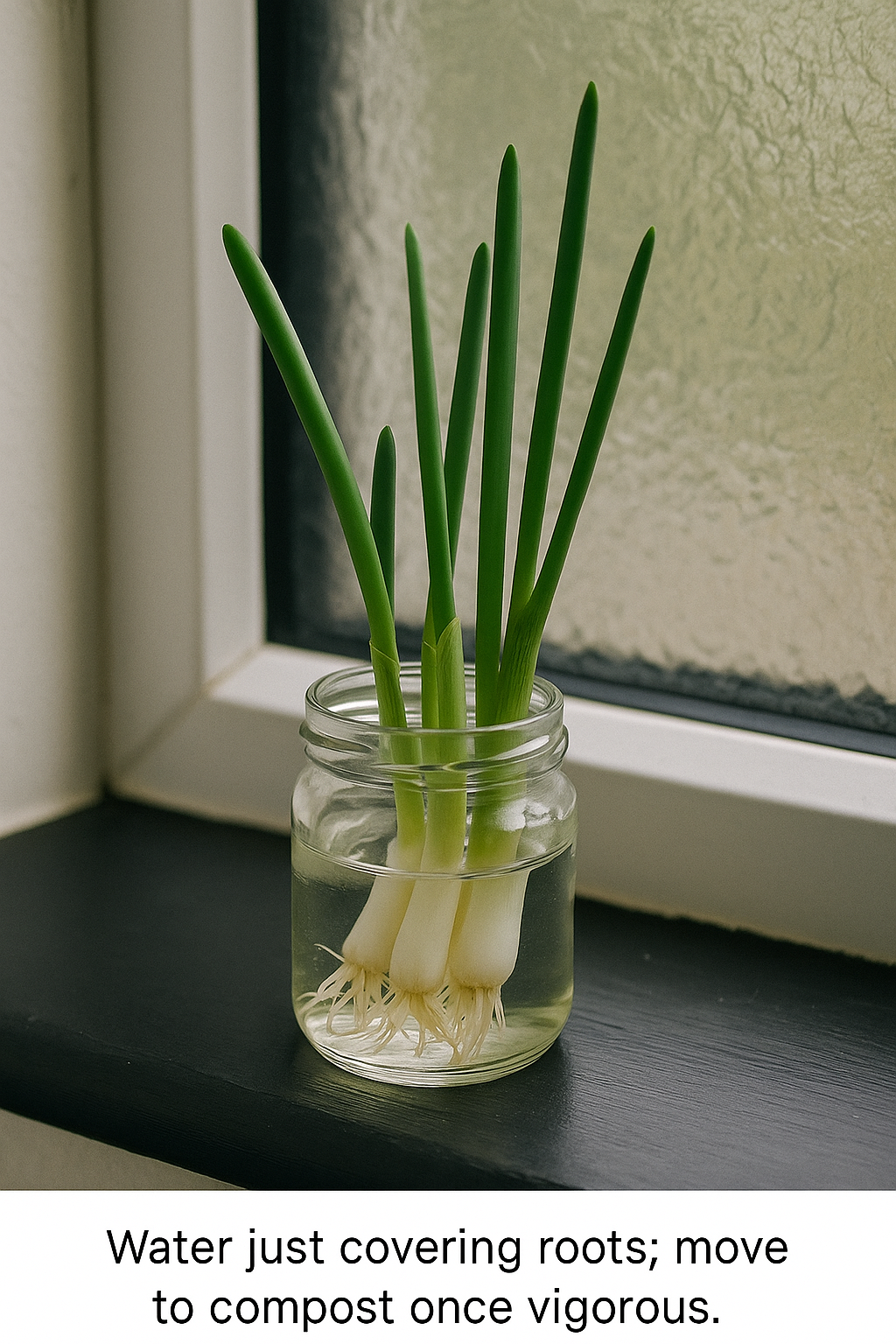
Little gem / romaine bases
Keep 3–4 cm of the core. Sit just in water, not submerged. New leaves in 4–7 days. Pot into moist compost once roots show.
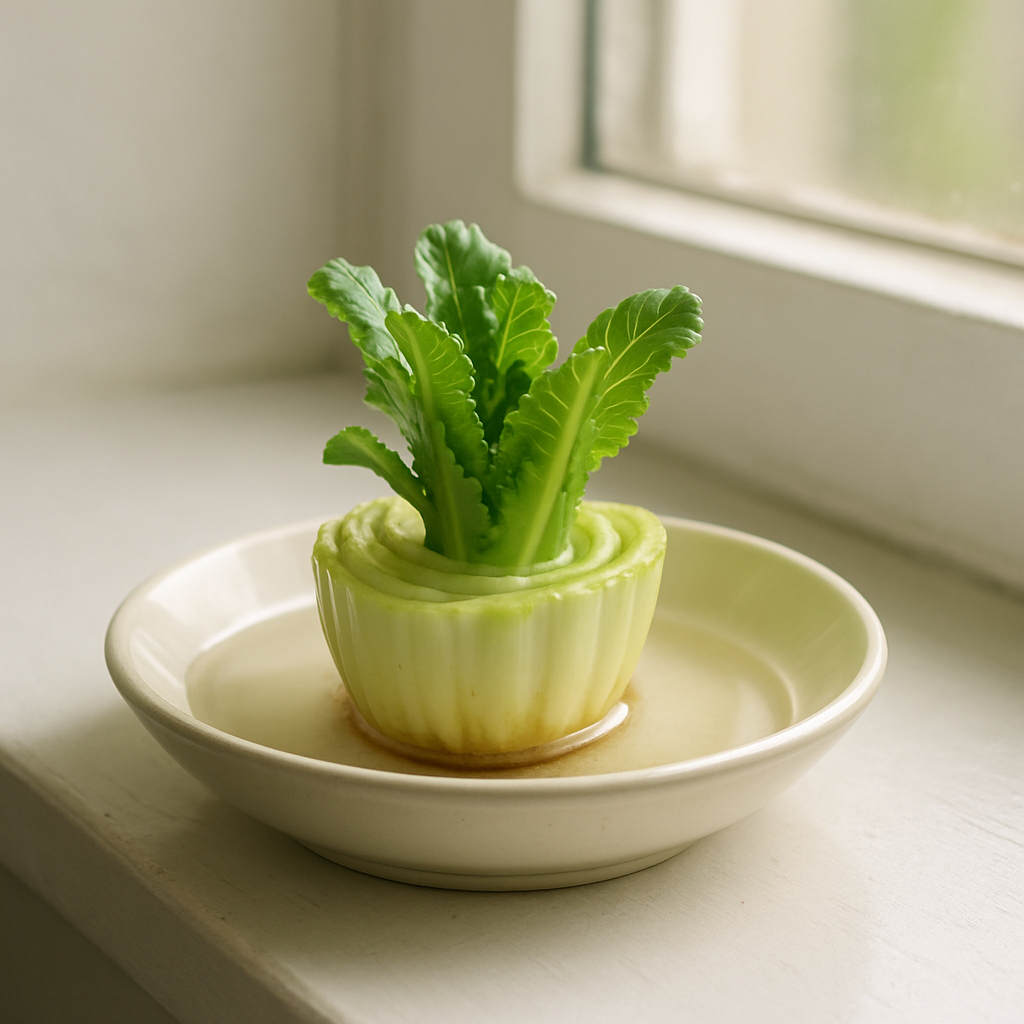
Mint & basil cuttings
Take 10–12 cm shoots, strip lower leaves, place in water. Roots form in ~7–10 days; pot when roots are 3–4 cm long.
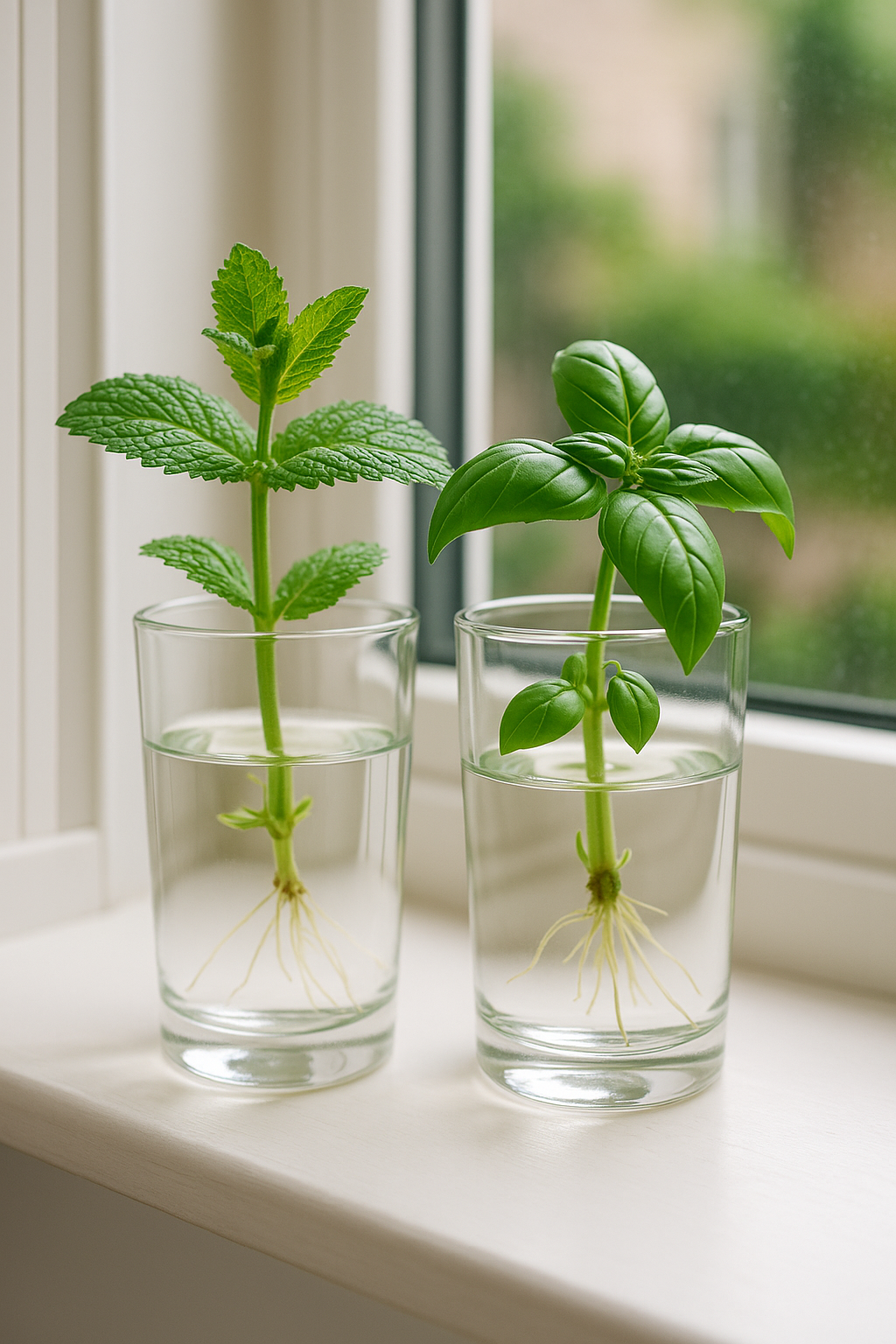
Leafy Bases & Bulbs
Leafy bases in water → compost
Prep: square off the base (fresh cut). Place in shallow water (just touching the base).
Daily care: top up water, rinse the base every 2–3 days to avoid slime.
Potting: when roots appear, move to a 12–15 cm pot with peat-free compost. Keep evenly moist.
Works with lettuce, pak choi, celery hearts, fennel bases (leaves regrow; full heads rarely reform).
Bulbs & cloves
Garlic greens: plant spare cloves 3–4 cm deep, 8–10 cm apart in a tray. Snip greens after ~3 weeks.
Onion bottoms: base with basal plate intact can sprout chives-like shoots; harvest greens.
Leek stumps: sit in shallow water to root, then pot to regrow leaves.
Note: supermarket potatoes can harbour disease; seed potatoes are safer for full tuber crops. If you do chit a sprouting spud, grow only for greens, not for saving seed.
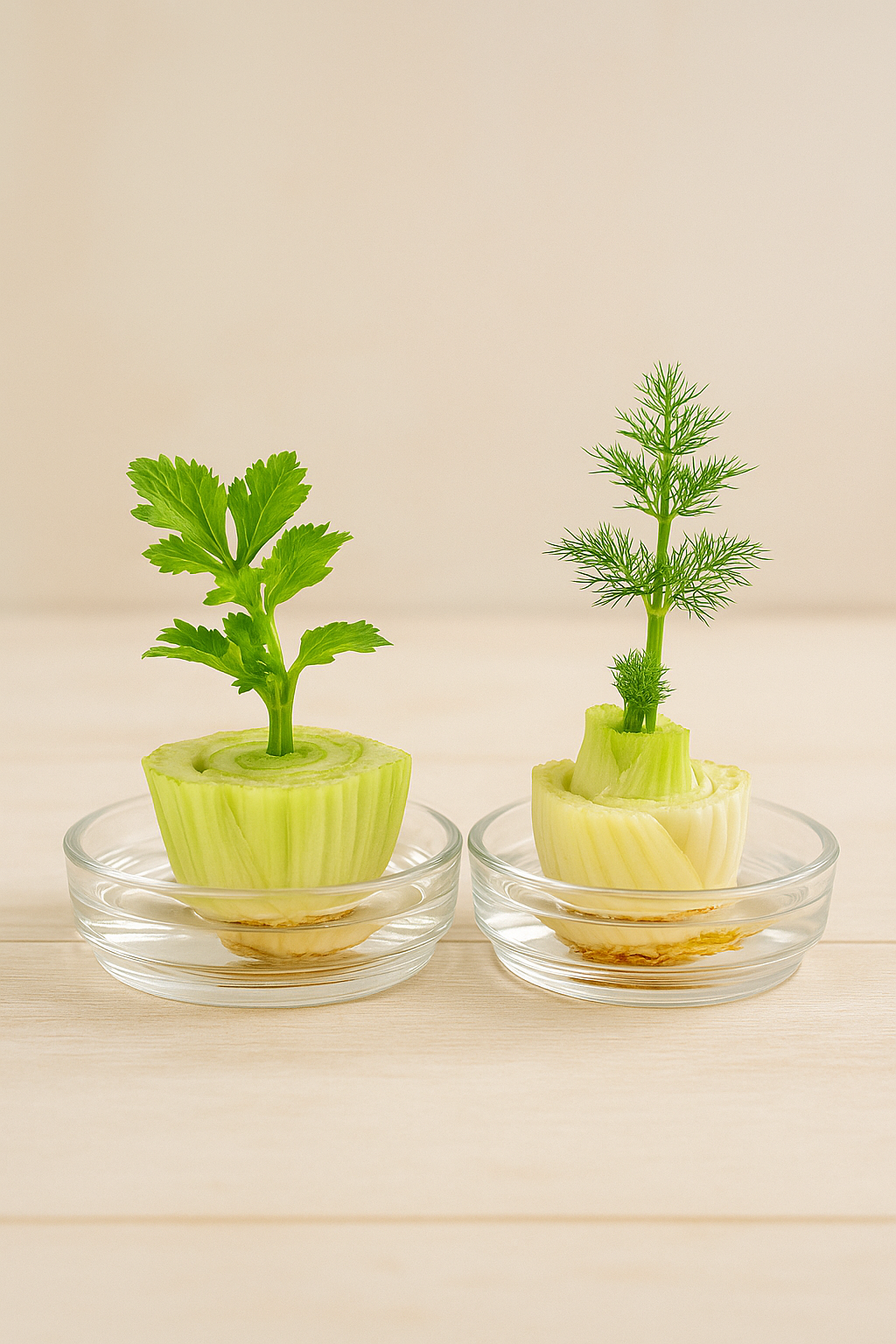
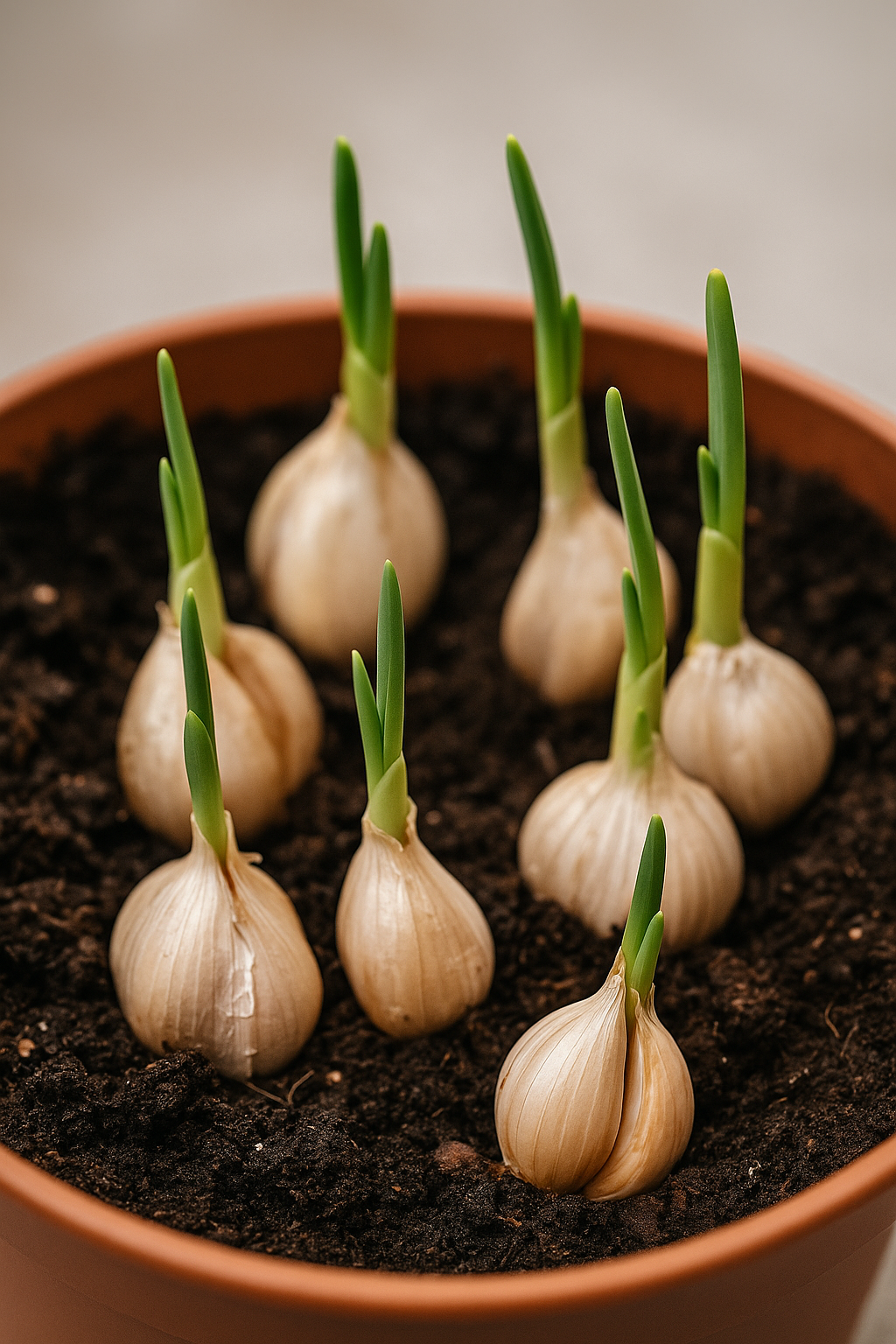
Herb Cuttings (water & soil methods)
Soft herbs in water (basil, mint, lemon balm)
- Snip a 10–12 cm shoot above a node. Remove lower leaves.
- Jar of water to just cover the nodes; change water every 2–3 days.
- Roots in ~7–10 days. Pot into a 9–12 cm pot; shade lightly for 2–3 days, then bright light.
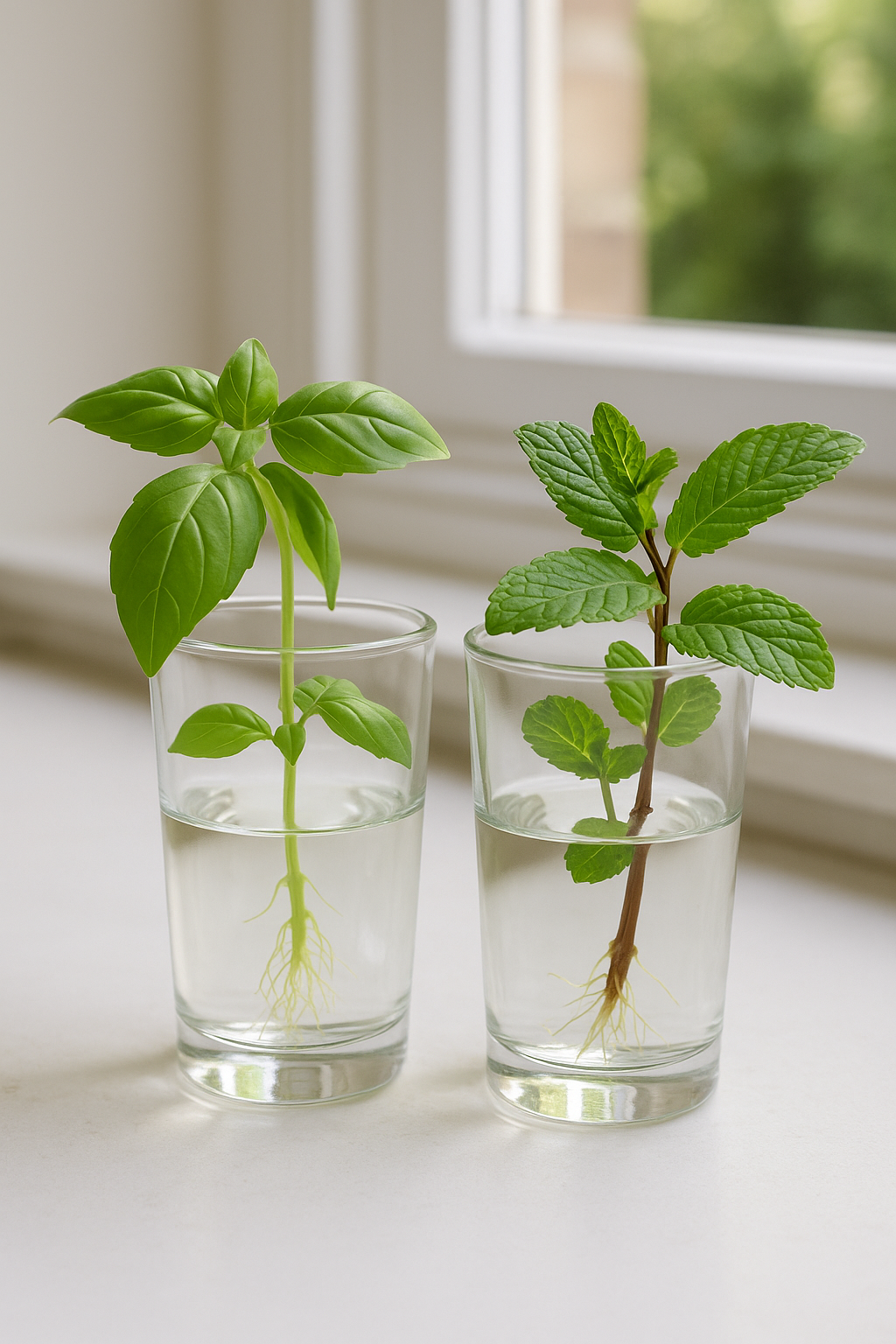
Woody herbs in compost (rosemary, thyme, sage)
- Take 7–10 cm semi-ripe cuttings (non-flowering tip). Strip lower leaves.
- Dip in cinnamon or rooting powder (optional). Insert into a 50:50 mix compost:perlite.
- Mist, cover with a vented bag or dome. Bright light, no direct midday sun. Rooting 3–6 weeks.
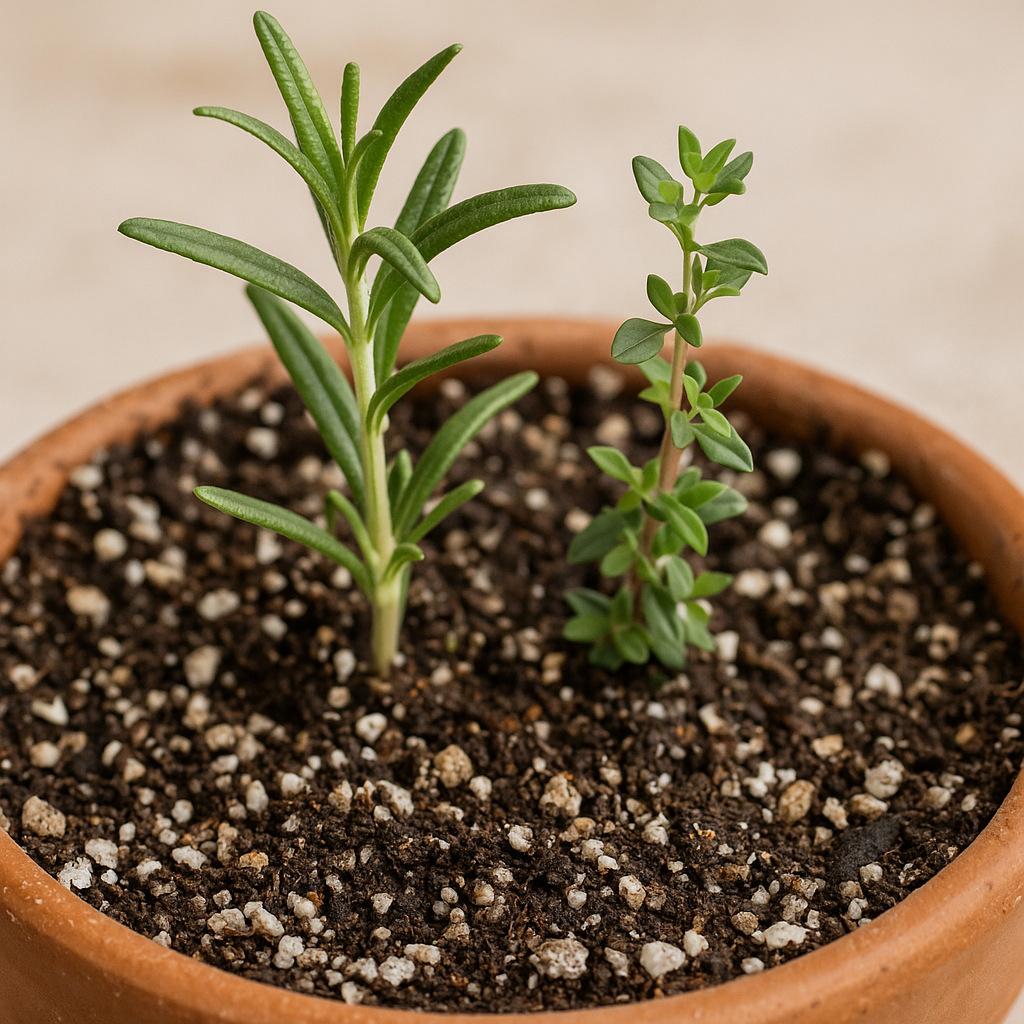
Roots, Tubers & Tropicals
Ginger & turmeric
Choose firm “hands” with visible buds. Soak 2 hours.
Pot 3–5 cm deep in wide tubs; warm, bright spot (not scorching sun). Keep just moist.
Shoots in 3–6 weeks with warmth. Harvest young rhizomes at 6–9 months.
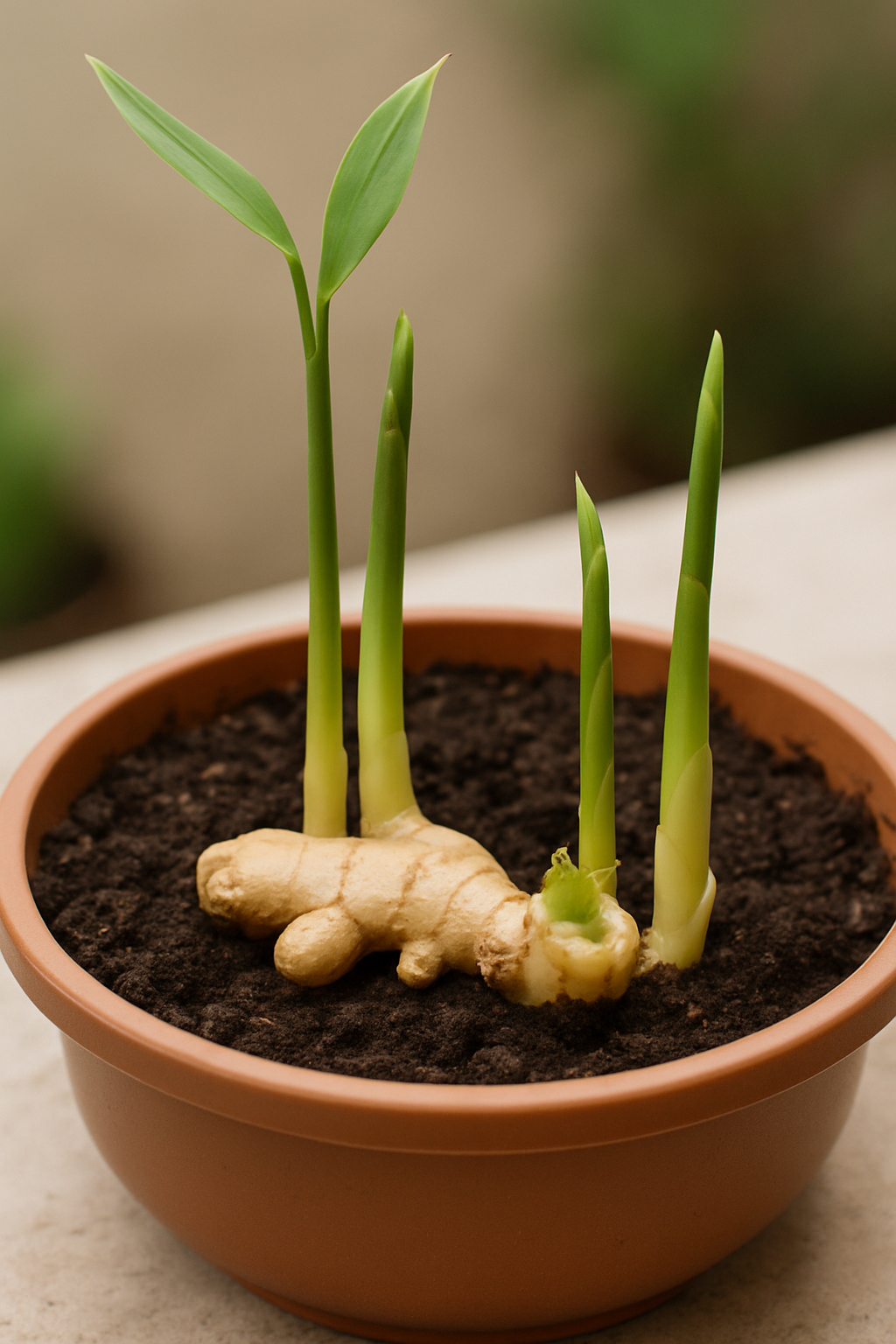
Sweet potato slips
Suspend half a sweet potato over water with cocktail sticks, or lay a chunk on moist compost.
When 10–15 cm shoots form, twist off, root in water, then pot on. Needs warmth and a long season.
Best under cover in the UK; grow for greens if the season is short.
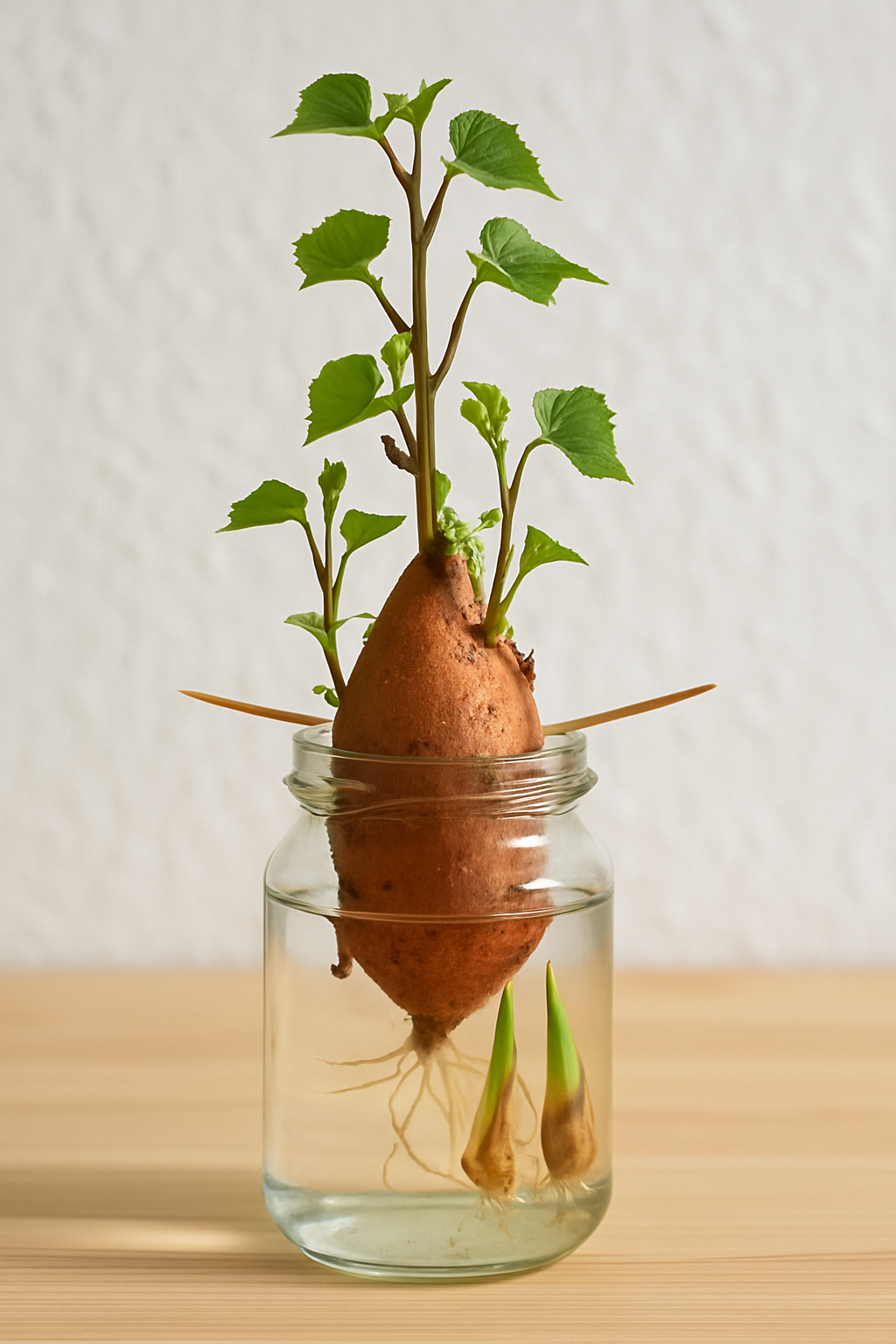
Care: Light, Water, Feed & Hygiene
Light & placement
- Bright, indirect window is ideal. East or west-facing works well.
- Rotate jars/pots weekly for even growth.
- Shade midday sun behind glass to avoid heat stress.
Water & feed
- Water-prop only: change water often; rinse jar and stems.
- Once potted: water deeply, then let the top 2–3 cm dry before next soak.
- Feed lightly after 2–3 weeks in compost (half-strength liquid feed).

How Fast? What to Expect
Fast (3–10 days)
- Spring onion greens
- Lettuce/pak choi bases showing new leaves
- Mint/basil roots appearing in water
Steady (2–6 weeks)
- Rosemary/thyme cuttings rooting
- Leek/onion bases re-leafing strongly in compost
- Ginger buds breaking in warmth
Cool rooms slow everything; warm, bright rooms speed it up. Aim for 18–22 °C if possible.
Troubleshooting
Slime or smell in jars
Change water, rinse stems, trim to clean tissue, reduce jar crowding, move out of full sun.
Cuttings wilt after potting
Too bright or too dry. Shade for 2–3 days, keep compost lightly moist, and reduce foliage by a third.
No roots forming
It’s too cold or too dark. Warmer room, brighter spot, or switch to the soil method with a clear cover.
Floppy, pale growth
Not enough light. Move closer to a bright window; consider a small LED grow bar in winter.
What to Regrow (Best Bets)
- Leafy bases: lettuce, pak choi, celery, fennel (for fronds).
- Alliums: spring onions, leek stumps, onion bases (greens), garlic cloves (greens).
- Herbs: basil, mint, lemon balm, oregano, thyme, rosemary, sage.
- Tropical store-cupboard: ginger, turmeric, sweet potato (slips).
- Bonus: coriander and parsley do better from fresh sowings than cut bases.
- Strawberry runners (from a friend’s pot) root easily for a new plant.
 Patch & Pot
Patch & Pot